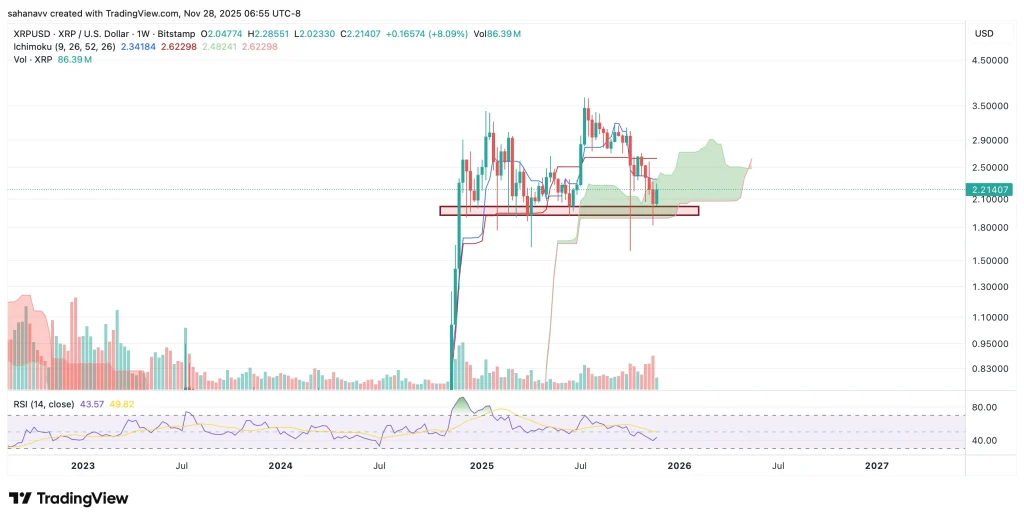XRP News Today: Central Banks Redraw the Map as Crypto Forces CBDC Acceleration
- BIS reports stablecoins/crypto drive 1/3 of central banks to accelerate CBDC development, with 91% still engaged in projects. - Emerging markets show higher stablecoin adoption in cross-border payments, while 67% of economies will soon regulate cryptoassets via bespoke frameworks. - Ripple's XRP maintains relevance in SBI's multi-rail payment system, coexisting with Chainlink's control layer for interoperability and liquidity. - BIS Innovation Hub advances blockchain-based solutions, aligning with 14% SW
The Bank for International Settlements (BIS) has highlighted that developments in stablecoins and other cryptoassets are prompting central banks to accelerate their work on central bank digital currencies (CBDCs). A 2024 survey by the BIS found that a third of central banks have intensified their CBDC efforts in response to these evolving market dynamics, underscoring the sector's growing influence on global financial infrastructure. While overall engagement in CBDC projects remains high—91% of central banks are involved—this figure has slightly declined from 94% in 2023, with emerging markets experiencing a more pronounced drop. The survey’s scope has expanded to include tokenization and has briefly addressed stablecoins and cryptoassets, indicating a broadened regulatory and policy focus.
Most central banks reported minimal mainstream usage of stablecoins, with only a small fraction noting their application in domestic payments, remittances, or cross-border retail transactions. Emerging market central banks, however, cited more significant usage, particularly in cross-border retail payments and remittances. In terms of regulation, 45% of central banks have already enacted legislation governing stablecoins and cryptoassets, with another 22% in the pipeline. As a result, nearly two-thirds of economies are expected to have regulatory frameworks in place soon. Almost 80% of jurisdictions have opted for bespoke regulatory approaches rather than repurposing existing legislation, reflecting the complexity and novelty of the asset class.
The BIS also emphasized the role of international cooperation in promoting financial stability. As part of its broader mission, the BIS Innovation Hub continues to develop public goods in the technology space to support central banks and improve the functioning of the global financial system. Recent initiatives have included advancements in digital asset frameworks and cross-border payment solutions, aligning with the increasing adoption of blockchain-based technologies by financial institutions .
Ripple's XRP , which is already used in live corridors by institutions like SBI Group for cross-border payments, has shown continued relevance in the context of financial infrastructure. Recent developments, including a new partnership between SBI and Chainlink , have sparked discussions about the potential for XRP to coexist with other blockchain-based solutions. Pundits argue that while Chainlink is positioned as a control layer—handling data, compliance, and messaging—XRP remains the bridge asset for settlement in SBI’s multi-rail system. This modular approach is seen as a strategic move to integrate both interoperability and liquidity into a unified financial stack.
The BIS's findings also reflect growing interest in blockchain's potential to reshape cross-border financial flows. Ripple's technology, particularly its use of XRP as a liquidity solution, aligns with the goals of faster, more efficient, and less fragmented international payments. Although Ripple and SWIFT currently lack a formal partnership, RippleNet can receive SWIFT’s MT103 payment messages through third-party APIs, enabling an indirect yet functional connection. This interoperability is supported by Ripple’s adoption of ISO 20022, a global financial messaging standard, which enhances compatibility with both legacy and emerging systems. Ripple CEO Brad Garlinghouse has speculated that the XRP Ledger could manage up to 14% of SWIFT’s transaction volume by 2030, although such projections remain speculative and are not presented as established facts.
The continued development of XRP-based corridors and the broader adoption of blockchain technologies in cross-border payments underscore the evolving role of digital assets in global finance. As central banks and financial institutions explore new ways to enhance efficiency and reduce costs, the interplay between traditional systems and crypto-based solutions will remain a key area of focus for both regulators and market participants.

Disclaimer: The content of this article solely reflects the author's opinion and does not represent the platform in any capacity. This article is not intended to serve as a reference for making investment decisions.
You may also like
No wonder Buffett finally bet on Google
Google holds the entire chain in its own hands. It does not rely on Nvidia and possesses efficient, low-cost computational sovereignty.

HYPE Price Prediction December 2025: Can Hyperliquid Absorb Its Largest Supply Shock?

XRP Price Stuck Below Key Resistance, While Hidden Bullish Structure Hints at a Move To $3

Bitcoin Price Prediction: Recovery Targets $92K–$101K as Market Stabilizes